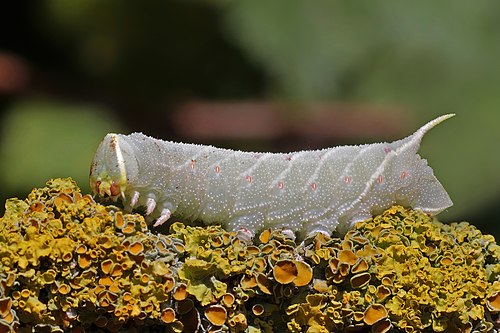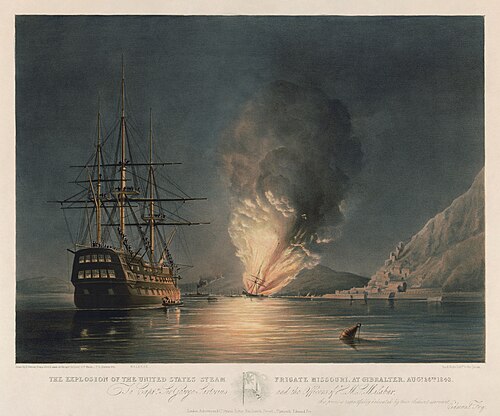Wikipedia:Picture of the day/On the main pages
This page shows the pictures of the day for yesterday, today, and tomorrow. If multiple pictures are featured as a random selection, all of the options are shown here. If the dates shown below are not current, please null edit the page.
Yesterday (2024-06-03)

|
|
Laothoe populi, the poplar hawk-moth, is a moth of the family Sphingidae. The species is found throughout the Palearctic realm and the Near East, and is one of the most common members of the family in the region. On first hatching, the larvae are pale green with small yellow tubercules and a cream-coloured tail horn, at which point they are known as hornworms. They later develop yellow diagonal stripes on the sides, and pink spiracles. This photograph, taken in Saint-Quentin-en-Tourmont, France, shows a late instar of L. populi. Photograph credit: Charles J. Sharp
Recently featured:
|
Today (2024-06-04)

|
|
HMS Malabar was a 74-gun ship of the line of the Royal Navy, launched in 1818 at Bombay Dockyard. In 1838, Malabar ran aground off Prince Edward Island in British North America and was damaged, with the loss of two crew members. She was refloated later that year and towed into Three Rivers in Lower Canada. In August 1843, Malabar, under the command of Sir George Sartorius, assisted in fighting a fire that destroyed the United States Navy sidewheel frigate USS Missouri at Gibraltar, taking aboard about 200 of that ship's survivors. Malabar was converted to a hulk in 1848, eventually becoming a coal hulk, and was renamed Myrtle in 1883. The hulk was sold out of the navy in 1905. This lithograph from around 1843 shows the crew of Malabar watching as Missouri explodes and burns in the distance. Lithograph credit: Thomas Goldsworthy Dutton, after Edward Duncan and George Pechell Mends; restored by Adam Cuerden
Recently featured:
|
Tomorrow (2024-06-05)

|
|
The Douglas fir (Pseudotsuga menziesii) is an evergreen conifer species in the pine family, Pinaceae, which is native to western North America. They grow to a height of around 20 to 100 metres (70 to 330 feet) and commonly reach 2.4 metres (8 feet) in diameter. The largest coast Douglas firs regularly live for more than 500 years, with the oldest specimens more than 1,300 years old. The cones are pendulous and differ from true firs as they have persistent scales. The cones have distinctive long, trifid (three-pointed) bracts which protrude prominently above each scale. They become tan when mature, measuring 6 to 10 centimetres (2+1⁄2 to 4 inches) long for coastal Douglas firs. This photograph shows a young female cone of the variety Pseudotsuga menziesii var. glauca (Rocky Mountain Douglas-fir), cultivated near Keila, Estonia. Photograph credit: Ivar Leidus
Recently featured:
|
